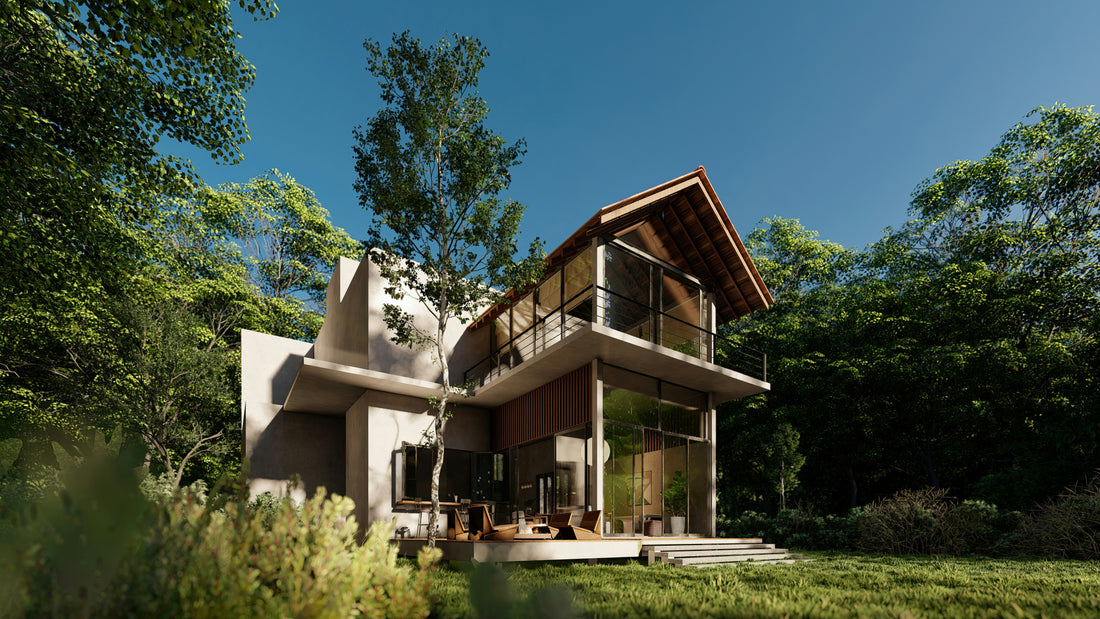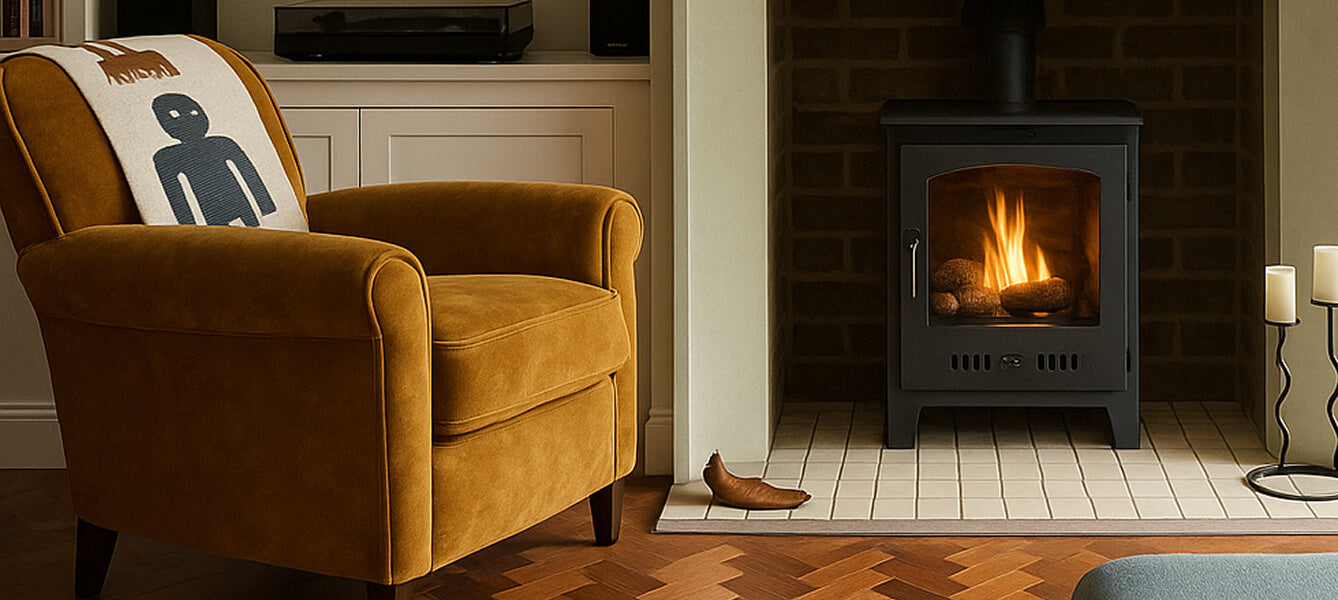
10 Biophilic Design Ideas to Bring Nature Into Your Living Space
We talked about the importance of biophilic design in a recent blog post, discussing how incorporating nature into built environments can have many benefits in your home.
But how should you go about introducing biophilic design into your living space?
In this guide, we provide you with several ways you can bring nature into your home. Many of these steps involve small changes that are simple to implement but can have a large impact on the overall feel of your interior spaces.
Check out these 10 biophilic design ideas to transform your interior today.
1. Create a Visual Connection with Nature

Seeing as the biophilic concept is all about introducing nature into your home, the simplest way to do that is by adding more plants and flowers to your rooms.
Adding real greenery to your interior space provides an instant way to create a stronger visual connection with nature. And it really can be as simple as you want it to be, such as adding some succulents, cacti or hardy plants like spider plants that thrive indoors.
Place potted plants around your room or on the window sills where they are easy to see from anywhere so that your eye is constantly aware of the presence of natural greenery.
If you want to invest more time and care, you could create fresh flower displays that you can replace weekly, adding more personality to your space. You might even want to experiment with bonsai trees, which require regular care and maintenance, and add some drama.
You could even use dry flowers. These require no regular maintenance, making them an even easier way to bring nature indoors.
2. Design Your Own Living Wall
If you like the idea of adding some greenery but want something more dramatic, a living wall is a great option.
A living wall, or vertical garden, will look amazing in any room. It can be large and dramatic, covering the whole wall, or you might simply want to create one using a small section of the wall.
Be as creative as you want to be with your wall. You could simply affix plant pots or shelves on the wall and add a selection of low-growing plants and trailing plants.
Ideally, you want to choose plants that can grow with limited amounts of soil and are happy to grow alongside other plants, like creeping figs and philodendrons.
After creating your wall display, you might want to change it up regularly to create a constantly changing backdrop in your room.
3. Use a Bioethanol Fireplace as a Focal Point

The visual beauty of flickering flames accompanied by the warmth that fire radiates produces a sense of calm, which is why it has appealed to humans for generations.
You can add a fireplace to your room to create a focal point that is not only pleasant to look at but can also become an area to socialise with others or even be used as a meditation point.
Bioethanol fireplaces are an excellent choice because they burn with real flames and produce warmth without the smoke and emissions of burning logs.
They are also available in a wide range of styles, from traditional to ultra-modern, and they can be freestanding or hung on the wall without the need to construct a flue. This means you can position one wherever you want. So if you want to incorporate biophilic design in your bedroom, a bioethanol fire is an easy way to do this.
The eco-friendly nature of this type of fireplace also has its place in biophilic design, with its focus on the natural world, helping you reduce your carbon footprint.
Use your fireplace to create a cosy nook in a corner of the room, surrounded by plants and natural materials. Or you could make it the focal point of the room. Wherever you position it, your fireplace will help to create a relaxing and calming atmosphere.
4. Utilise Views of Nature
Try to incorporate more views of nature within your living space. For example, if you have a garden, enhance the view by installing a sliding glass door, improving the connection between the indoors and outdoors.
You could also make changes to your garden that you can admire from indoors, like planting a tree or building a pond.
Another trick is to use mirrors to reflect the natural views. Place them strategically in your room opposite the windows, and you will instantly create a feeling of spaciousness. Then, in every direction you look, you will see green.
5. Incorporate Water Features

Water features are another simple way to introduce natural elements into your home. The natural flow of water creates a relaxing sound that enhances the sensory experience, a constant background noise reminding you of nature.
Indoor fountains are an easy addition to your space to enhance the atmosphere, but you could also go big by installing an indoor water wall, offering a soothing backdrop that you could sit and watch to enjoy the feeling of tranquillity it brings.
6. Make Use of Organic Shapes and Patterns
Try to incorporate organic shapes and patterns inspired by the natural world throughout your home. Organic shapes, soft curves and asymmetrical forms are not only dramatic but add beauty and interest to any room.
These can be in the décor, the furniture or small details throughout the room. Choose sofa throws or hanging tapestries with water-like patterns and soft textures inspired by the natural world. Or choose wallpaper and textiles with floral motifs and patterns that mimic leaves.
Add some artwork with natural prints or landscape scenes, or hang photographs of nature to draw the eye and create a connection with nature.
7. Maximise the Amount of Light Entering the Room

Darkness is the antithesis of biophilic design, so make use of natural light in your space. Natural light also has a positive impact on mood and energy.
The ways you can do this include large-scale changes, like installing more windows, positioning a skylight in the roof or installing floor-to-ceiling windows or glass doors.
But you could also simply place more mirrors in the room to reflect the available light, or use net curtains instead of heavy fabrics.
8. Introduce Aromas
We’ve discussed the visual enhancements to bring in biophilic design and the sensory benefits of natural flames and flowing water sounds. But aromas also play a role.
Natural aromas are also easy to incorporate into almost any space. Start by choosing aromatic plants and flowers like gardenia or lavender, or grow a small herb garden on your windowsill.
Alternatively, use diffusers with natural oils, candles that burn with a natural aroma or scented bioethanol in your fireplace.
9. Use Plenty of Natural Materials

Natural materials are pleasing to look at as well as touch, so make use of them in your space. Use wood as much as possible, from furniture to flooring, especially wood that displays its natural grain.
Make use of as many natural materials as you can, like clay, granite, marble, bamboo and natural fabrics like rattan and wool.
Another option is to forage outdoors for stones, shells, branches, logs, pinecones and more taken directly from the natural world.
10. Improve the Transition Between Indoors and Outdoors
Try to create a sense of flow between the indoors and outdoors. You can do this by installing sliding doors that open up onto the garden and encourage greater movement.
Focus on enhancing air flow and circulation by opening the windows and doors and letting the fresh air in, which will also allow the sounds of the outside to enter, from birdsong to rainfall.
Bring the Outside In with These Biophilic Design Ideas

Following these simple biophilic design tips can enhance your indoor spaces and increase feelings of relaxation and well-being – and it couldn’t be simpler.
Start by going over the above ideas and decide which you can apply in your own home, many of which also apply to biophilic office design. These range from steps that you can accomplish in no time at all to more significant changes.
Whether you follow all the tips above or take inspiration from a few, you can easily transform your indoor space using elements of the natural world without spending much time or money to enjoy the many benefits of biophilic design in your home.
